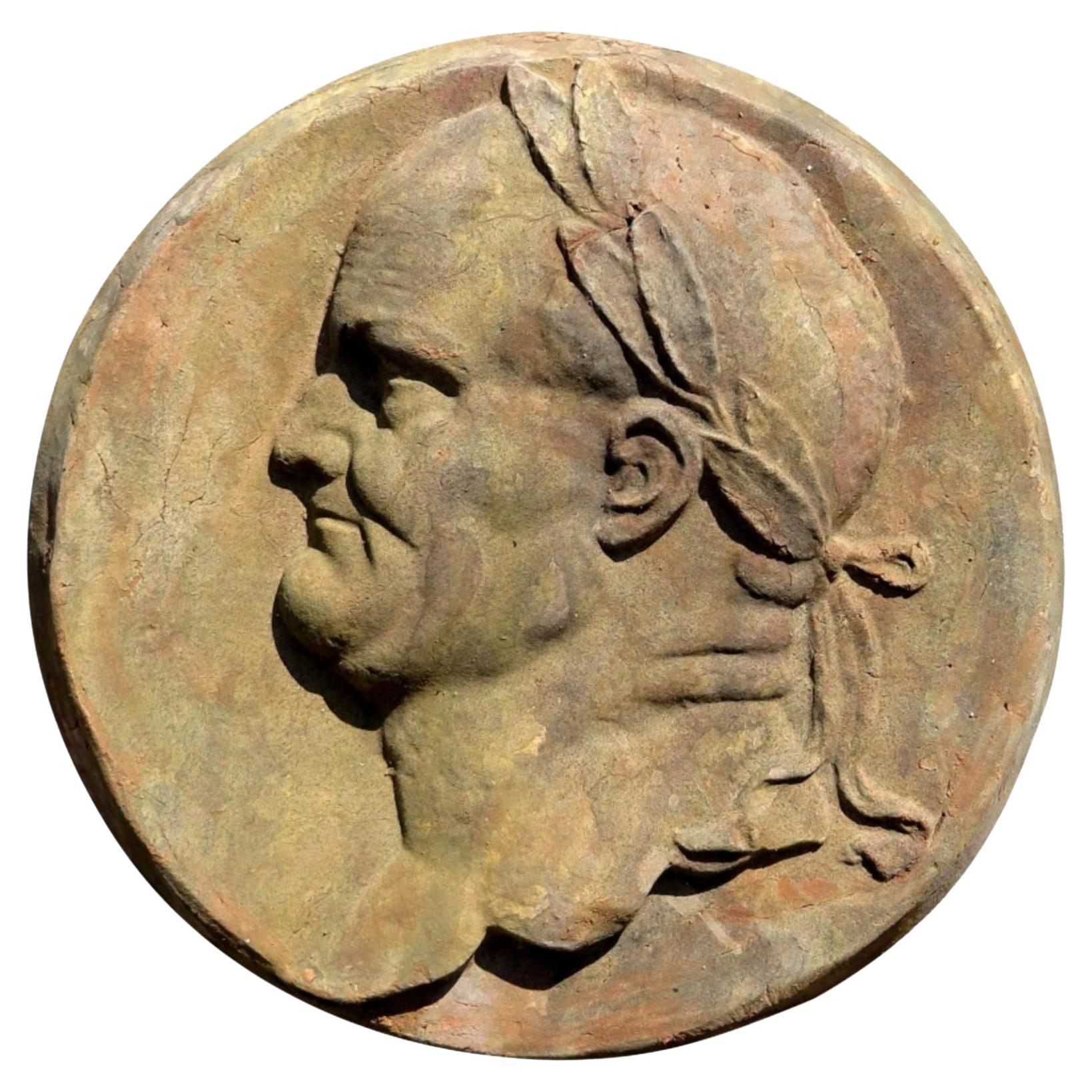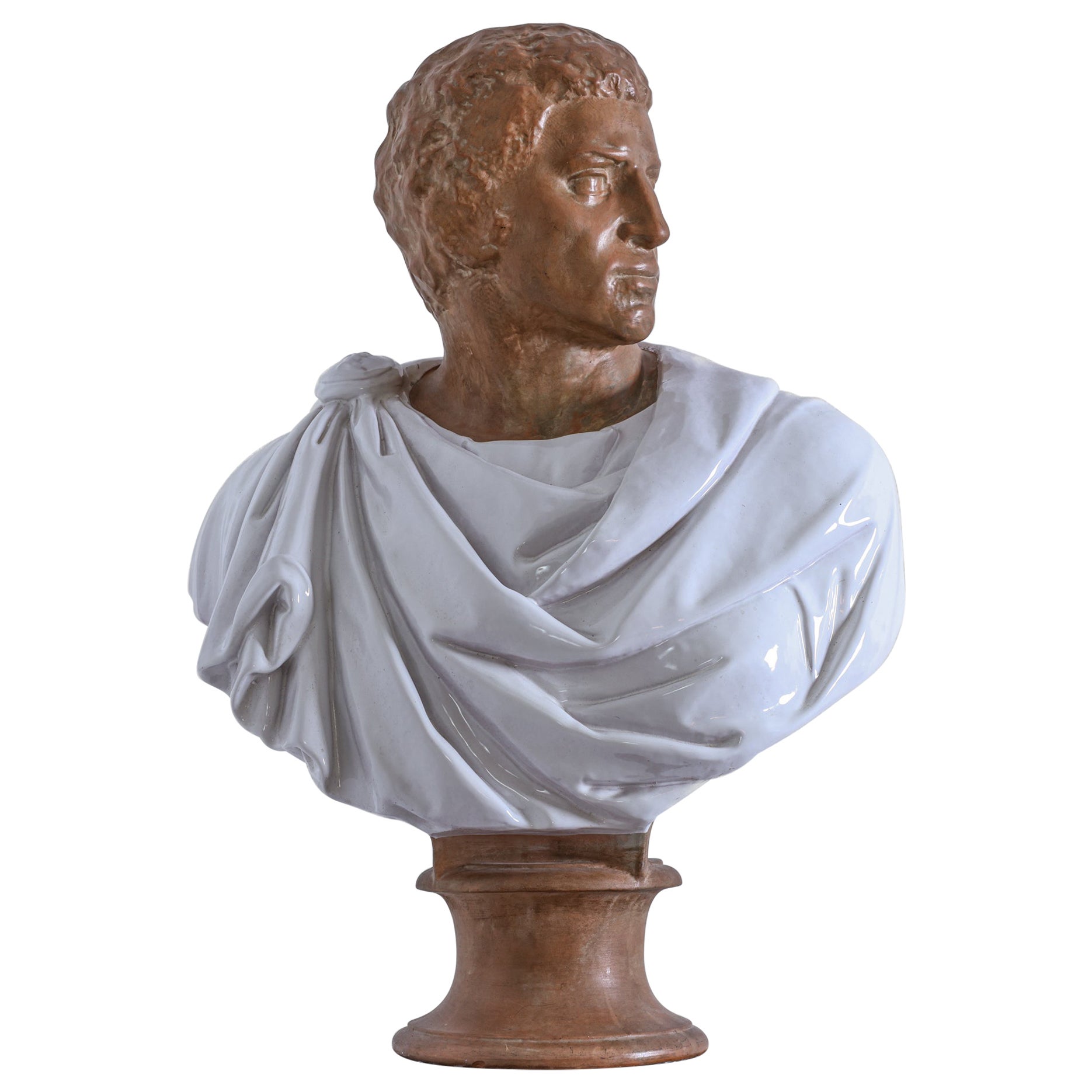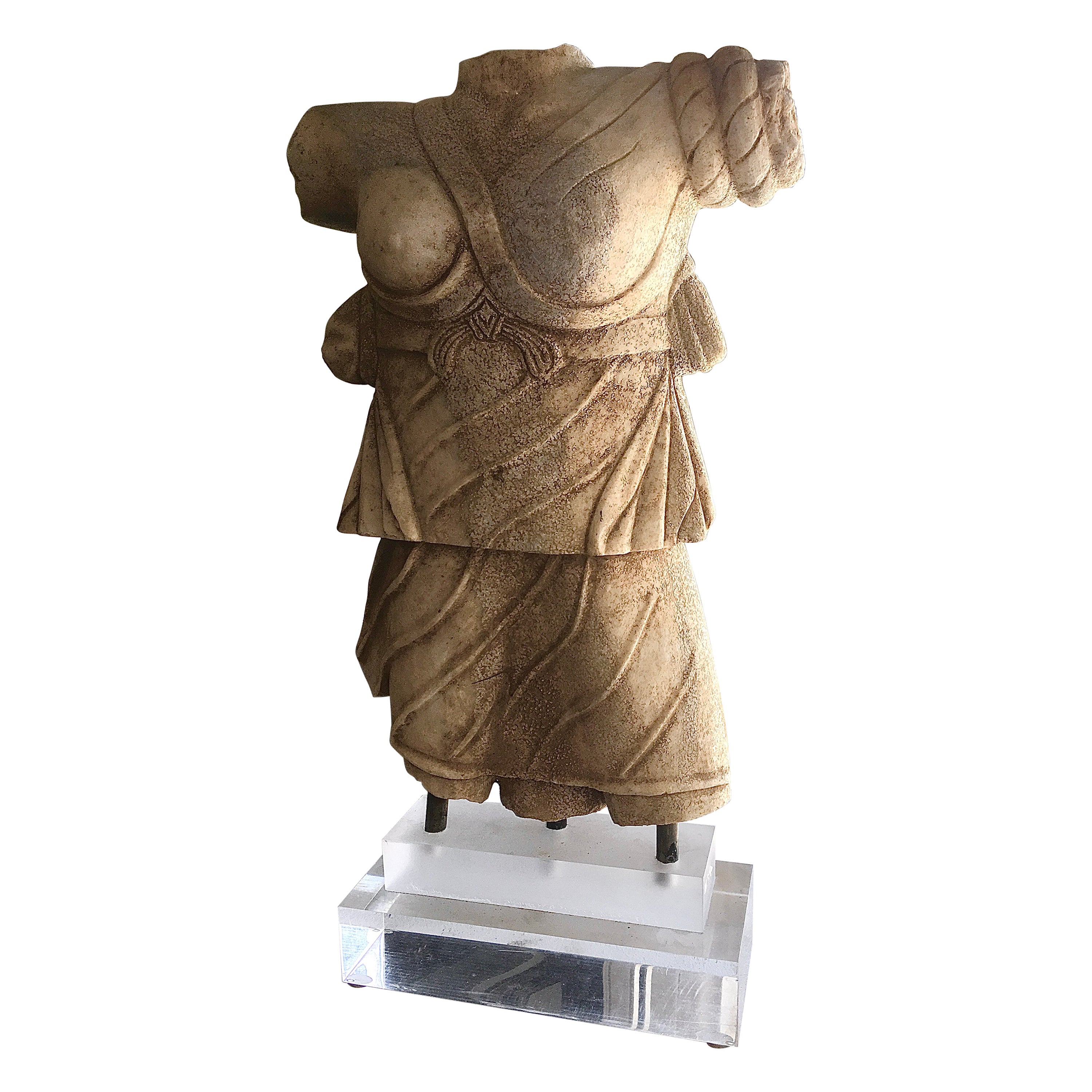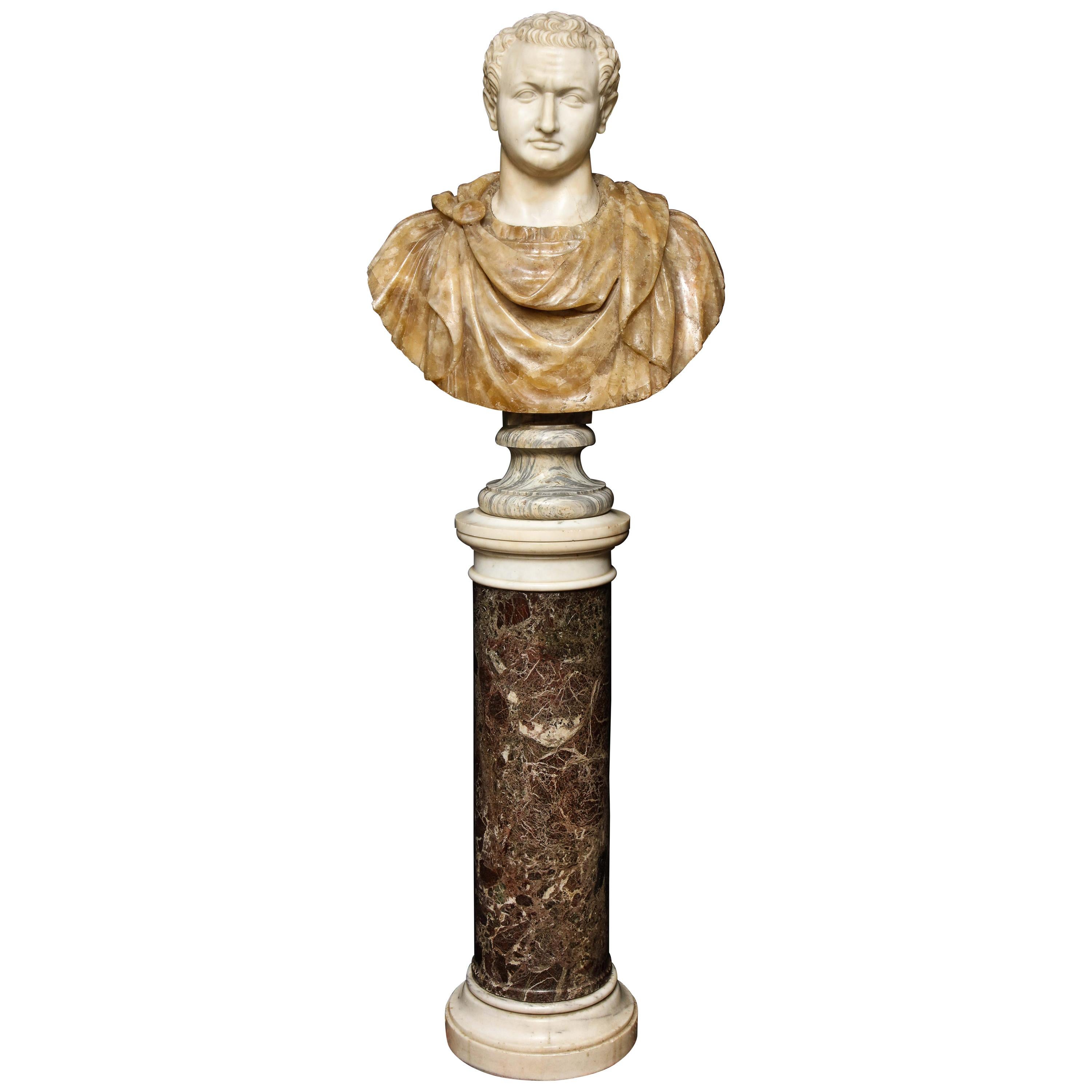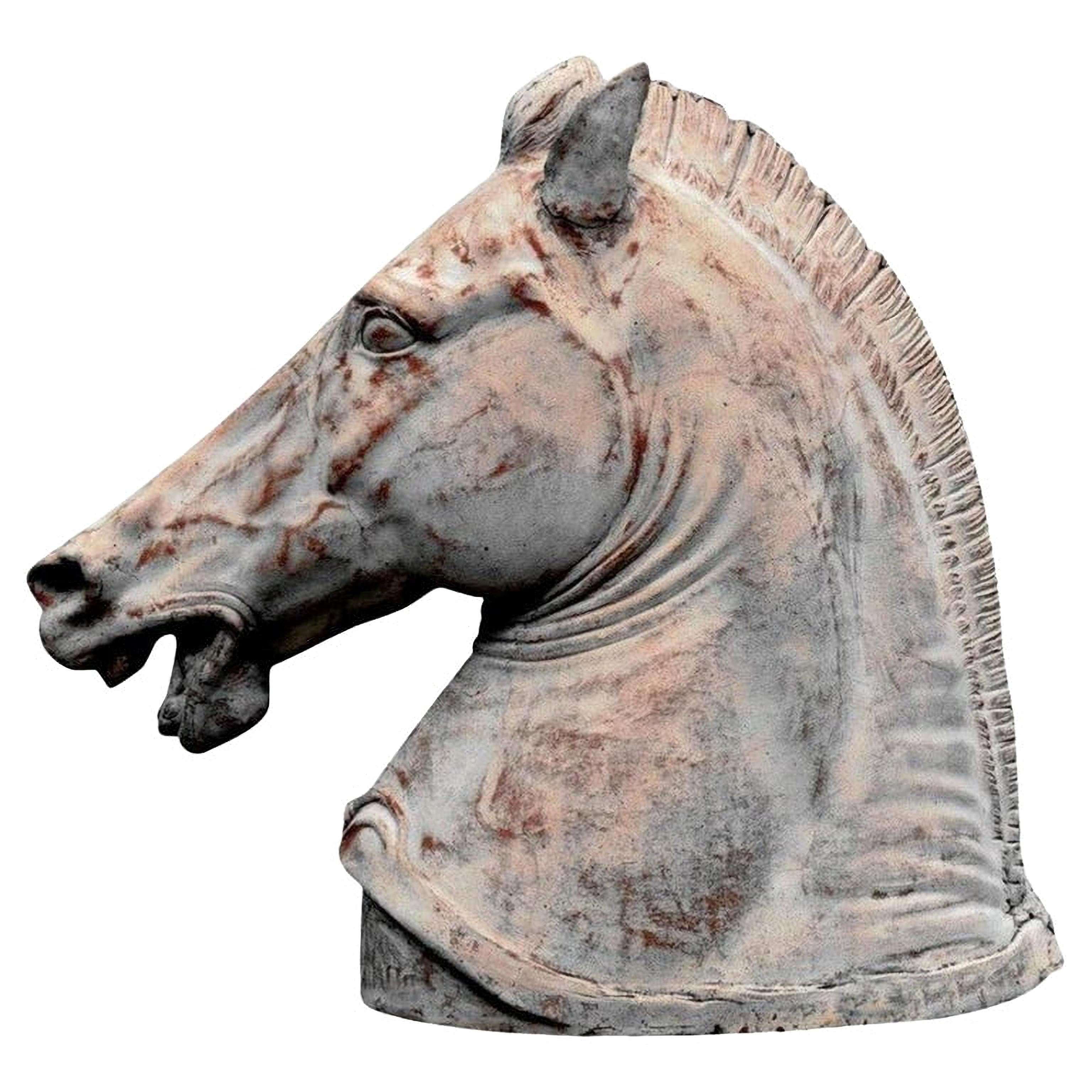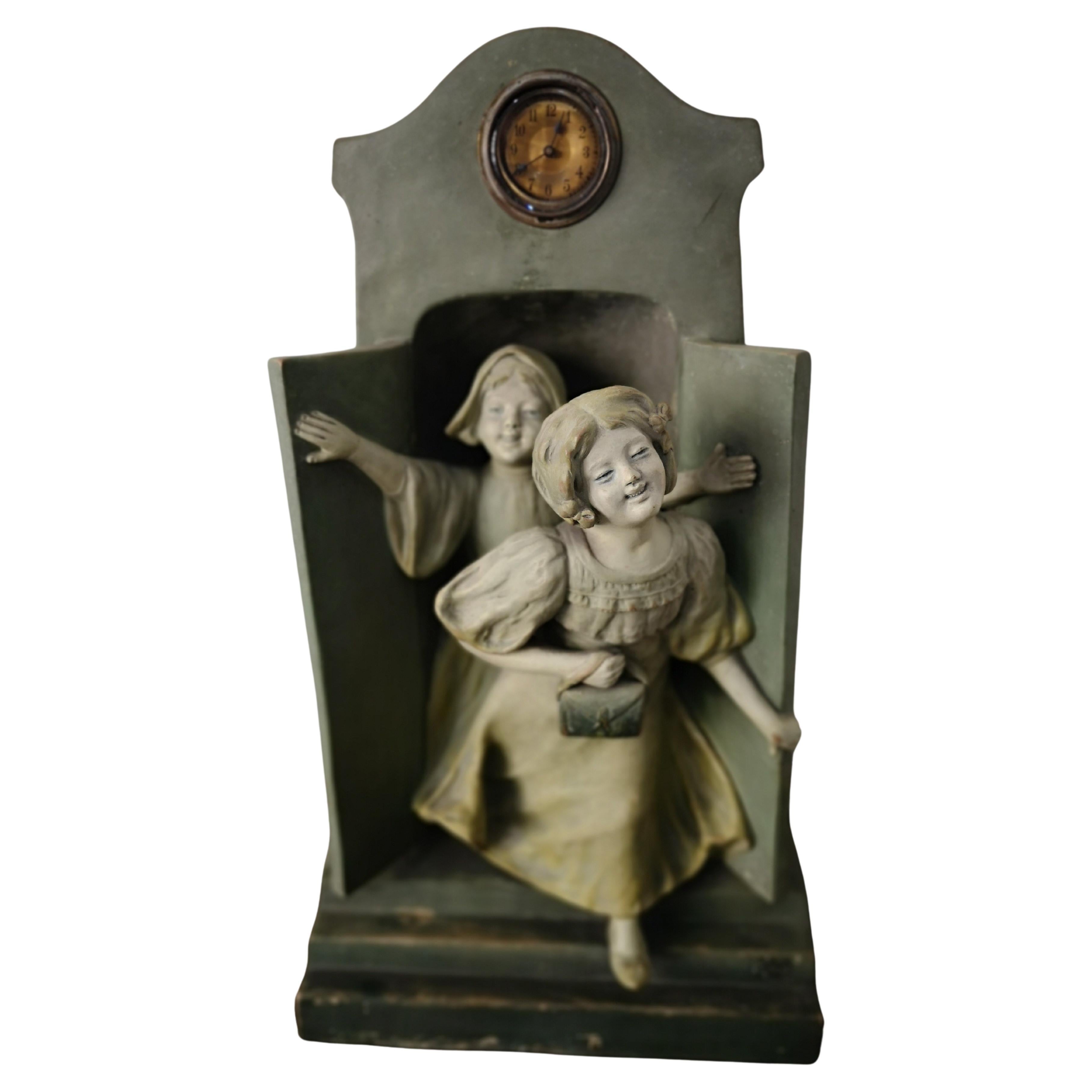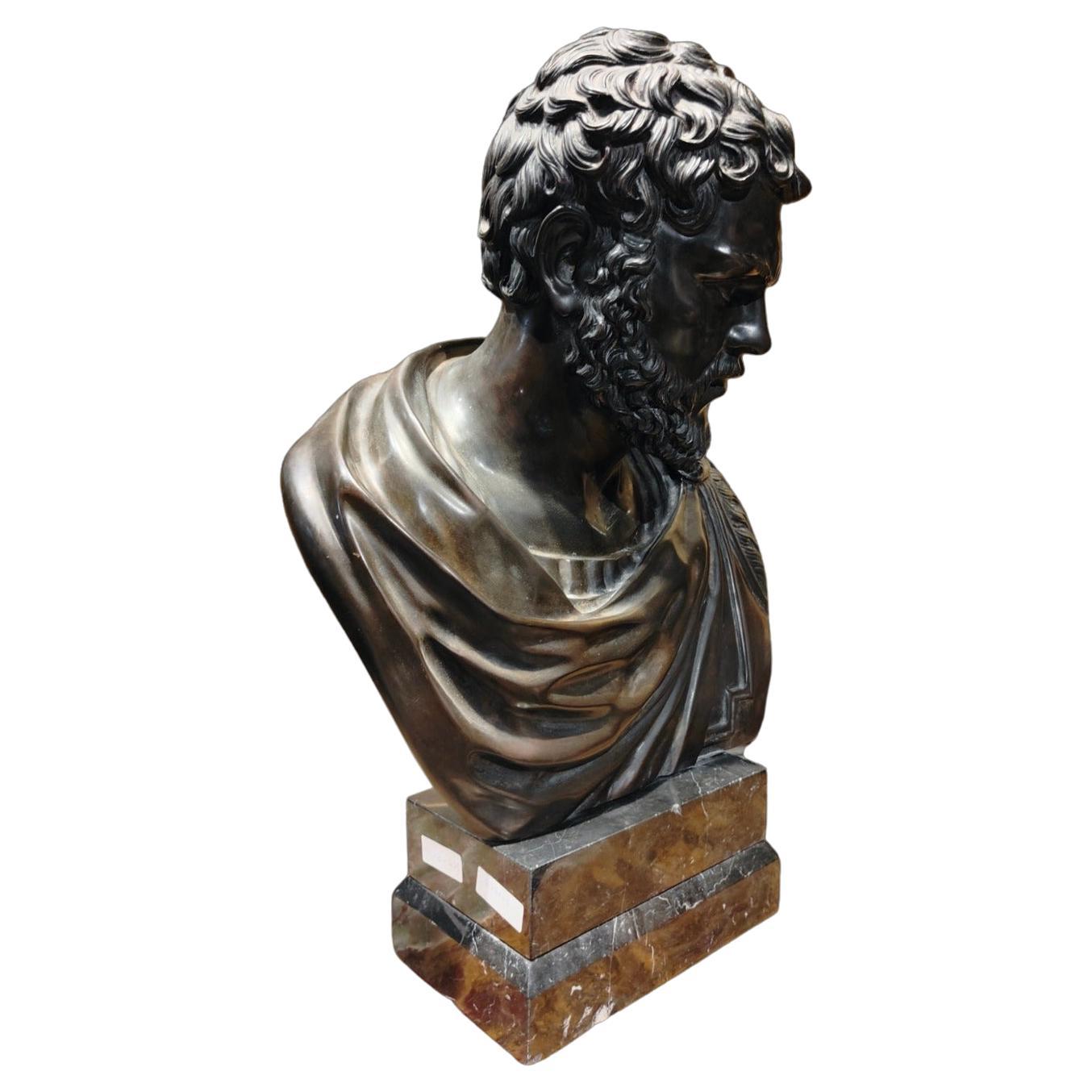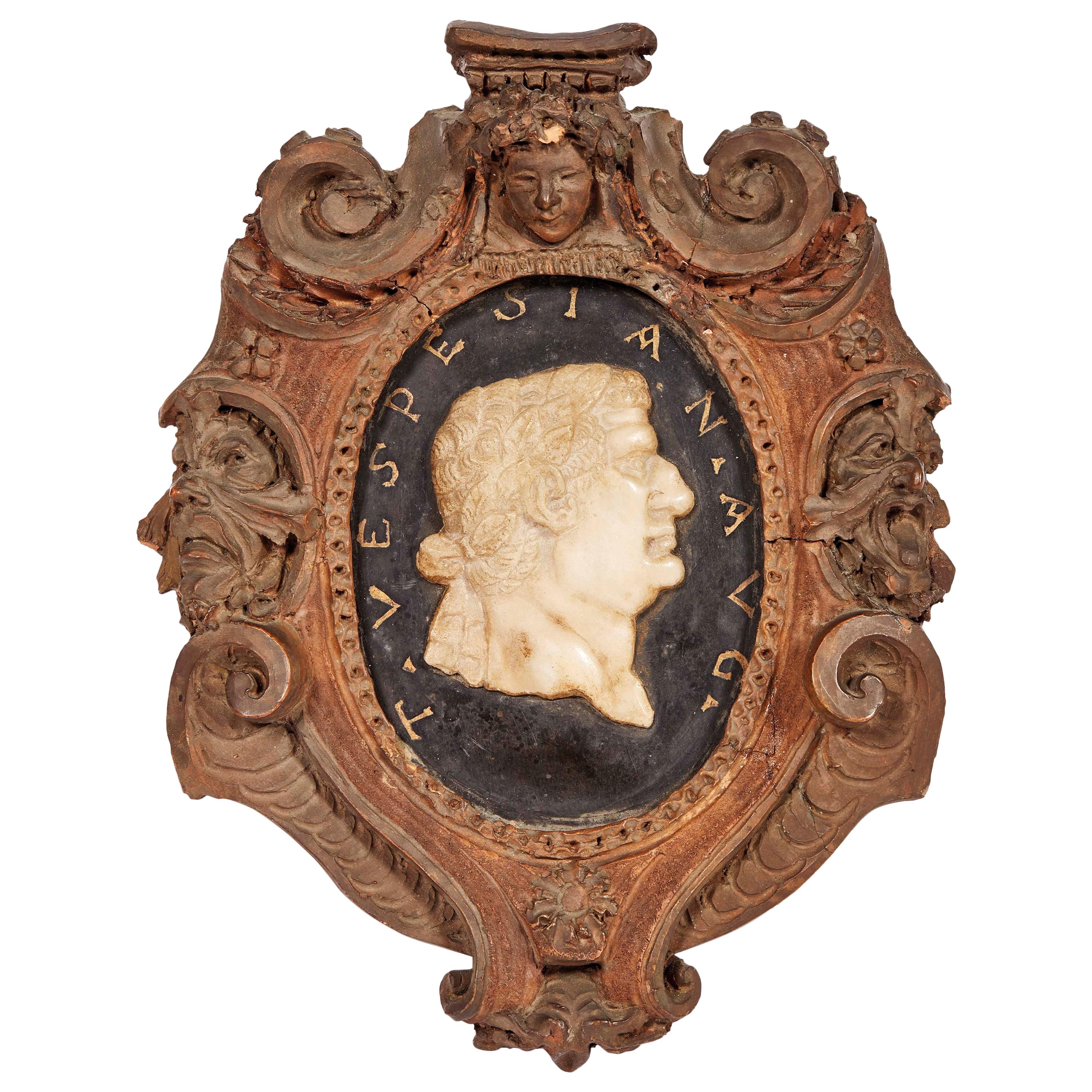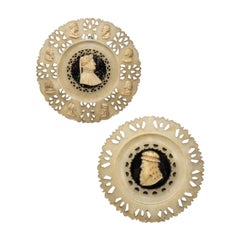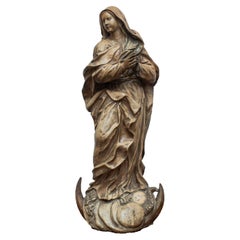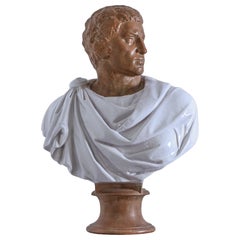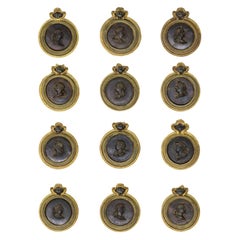
19th Century Portraits with Roman Emperors and Consorts Sculptures Terracotta
View Similar Items
Want more images or videos?
Request additional images or videos from the seller
1 of 14
19th Century Portraits with Roman Emperors and Consorts Sculptures Terracotta
About the Item
- Dimensions:Height: 1.58 in (4 cm)Width: 9.06 in (23 cm)Length: 1.58 in (4 cm)
- Sold As:Set of 12
- Style:Classical Roman (In the Style Of)
- Materials and Techniques:
- Place of Origin:
- Period:
- Date of Manufacture:19th Century
- Condition:Refinished. Wear consistent with age and use.
- Seller Location:Milan, IT
- Reference Number:1stDibs: LU5918226765472

About the Seller
5.0
Vetted Seller
These experienced sellers undergo a comprehensive evaluation by our team of in-house experts.
Established in 2000
1stDibs seller since 2021
25 sales on 1stDibs
Typical response time: 10 hours
More From This SellerView All
- 19th Century Young Woman Portrait Plaster SculptureLocated in Milan, ITNineteenth century Young woman portrait Measures: Plaster, 50 x 40 x H 40 cm Dated 10 - 1 - MCMI The emergence of a "disheveled manner" in sculpture is affirmed since the 1880s with Giuseppe Grandi, author of the Monument to the Five Days of Milan, Ernesto Bazzaro, Paolo Troubetzkoy...Category
Antique 19th Century Italian Figurative Sculptures
MaterialsPlaster
- 19th Century Pair of Desks with portraits of Petrarch and Leonardo AlabasterLocated in Milan, IT19th century Pair of desks with portraits of Petrarch and Leonardo (2) Alabaster, 34 and 35 cm diam The pair of alabaster discs features a central cameo with the effigy of Petrarch and Leonardo, probably part of a larger series that featured illustrious characters from Italian history. On the openwork frame of Petrarch there are portraits of some characters who face each other, combined for centuries, as can be seen from the shapes of the garments that span several centuries: from the thirteenth century, in which men wear long-tipped bonnets, to the fifteenth century and Sixteenth century, the two characters at the top, in the seventeenth century, with wide collars, up to the eighteenth century. Francesco Petrarca (1304-1374) embodies the figure of the humanist intellectual par excellence, entirely dedicated to the study of Latin conceived as the only form of expression worthy of a man of letters, so as to serve any form of written communication, including letters and the reflection on himself witnessed in the Secretum. A personality made more complex by obsessive perfectionism, which led him to a continuous and infinite editing of the work which he also flaunted to consider as minor and which instead ensured him an undying fame among posterity, the Canzoniere. But the only aspect fixed in the collective imagination is that of the lover who idolizes the places where his ideal love blossomed...Category
Antique 19th Century Italian Abstract Sculptures
MaterialsAlabaster
- 18th Century Immaculate Madonna Terracotta SculptureLocated in Milan, IT18th century Immaculate Madonna Terracotta, 53 x 22 x 20 cm The work examined depicts the Virgin Mary treated according to the iconography of the Immaculate Virgin The theme of the Immaculate Conception began to appear in artistic works ever since the debate began, which saw the Franciscans and the ramifications of the Benedictine Order lined up on one side, linked to the thought of Anselmo d'Aosta and Bonaventura da Bagnoregio, and on the other the Dominicans, linked to the discussion offered by Thomas Aquinas...Category
Antique 18th Century European Figurative Sculptures
MaterialsTerracotta
- 19th Century Cesare Beccaria Bronze SculptureLocated in Milan, IT19th Century. Cesare Beccaria Bronze, 49 x 13 x 15 cm The bronze statue examined faithfully reproduces the famous Milanese monument by Giuseppe Grandi (1843-1894) dedicated...Category
Antique 19th Century Italian Figurative Sculptures
MaterialsBronze
- 19th Century Madonna and Child with Souls in Purgatory Papier-Mache SculptureLocated in Milan, ITFirst half of the 19th century Madonna and Child with souls in Purgatory Lacquered and gilded papier-mache with polychrome wooden base cm 96.5 x 37.5 x 28 "At that time I asked the Lord Jesus: 'For whom do I still have to pray?'. Jesus answered me that the following night he would make me known for whom I had to pray. I saw the Custodian Angel, who ordered me to follow him. At a moment I found myself in a foggy place, invaded by fire and, in it, a huge crowd of suffering souls. These souls pray with great fervour, but without effectiveness for themselves: only we can help them. The flames that burned them, they did not touch me. My Guardian Angel did not abandon me for a moment. And I asked those souls what their greatest torment was. And they unanimously answered me that their greatest torment is the ardent desire of God. I read the Madonna who visited the souls of Purgatory. The souls call Mary 'Star of the Sea'. She brings them refreshment ". (Diary of Sister Faustina Kowalska p. 11) A Polish religious, Saint Faustina Kowalska (1905-1938) reinterpreted in the pages of her testimony the ancient role of the Virgin as savior and supporter of the souls of Purgatory. The Second Vatican Ecumenical Council established that, assumed into Heaven, the Mother of God should operate a continuous intercession in favor of those children waiting for Paradise who were in the place, quoted for the first time by Pope Gregory the Great...Category
Antique Early 19th Century Italian Figurative Sculptures
MaterialsPaper
- 19th Century Venus Sculpture Marble by BarriasBy Louis Ernest BarriasLocated in Milan, ITLouis-Ernest Barrias (Paris, 1841 - there, 1905) Venus Marble, h. 59 cm, 5 Signed "E Barrias" The renewal of classical beauty was exploited during the course of the nineteen...Category
Antique 19th Century Italian Figurative Sculptures
MaterialsMarble
You May Also Like
- Titus Roman Emperor, Terracotta Round End, 19th CenturyBy Europa AntiquesLocated in Madrid, ESTitus Roman Emperor, terracotta round end 19th century. Diameter 31cm. thickness 6cm. weigh 8kg. Material terracotta. Very good condition. Titus Flavius Caesar Vespasian Augustus (in Latin: Titus Flavius Caesar Vespasianus Augustus; in the epigraphs: IMP•T•CAESAR•VESPASIANUS•AVG•PON•M•TR•POT[1]; Rome, 30 December 39 – Aquae Cutiliae, 13 September 81, better known simply as Titus, was a Roman emperor, belonging to the Flavian dynasty, and reigned for just over two years from 79 to 81, the year of his death. Before ascending the throne, Titus was an able and esteemed general who distinguished himself for the repression of the rebellion in Judea in 70, during which the second temple in Jerusalem was destroyed. He was considered a good emperor by Tacitus and other contemporary historians; he is known for his program of public works in Rome and for his generosity in rescuing the population following two disastrous events: the eruption of Vesuvius in 79 and the fire in Rome in 80. Famous is the definition that the historian Suetonius gave of him: "Amor ac deliciae generis humani. » « Love and delight of mankind. » Titus' family, the gens Flavia, belonged to that Italian nobility which, in the first half of the first century, was gradually replacing the more ancient Roman aristocracy, weakened by the decades of civil wars fought in the first century BC. The Flavians, in fact, were not of noble origins, but they managed, within just three generations, to rise from humble origins to the honor of the imperial purple. Tito's paternal great-grandfather, Tito Flavio Petrone from Rieti, had fought as a centurion evocatus in the army of Gnaeus Pompey the Great during the civil war of 49-45 BC, fighting in the battle of Farsalo and fleeing after the defeat of the Pompeians; he was pardoned by Cesare and became tax collector...Category
Antique Late 19th Century Italian Baroque Figurative Sculptures
MaterialsTerracotta
$1,048 Sale Price20% Off - Terracotta Bust of Roman EmperorLocated in Palm Desert, CAThis terra-cotta sculpture no doubt depicts the bust of Roman Emperor or Senator in classical dress gazing over his left shoulder. This is a magnificently robust life size bust...Category
Vintage 1960s Italian Classical Roman Busts
MaterialsTerracotta
- Early 19th Century Roman SculptureLocated in Los Angeles, CABeautiful Early 19th Century Roman Stone Sculpture. Sculpture without the base measures 25 inches in height.Category
Antique Early 19th Century Italian Classical Roman Figurative Sculptures
MaterialsStone
- Terracotta Portrait Bust of Caracalla Roman EmperorLocated in Wormelow, HerefordshireA terracotta portrait bust of Caracalla, Roman Emperor from 198 to 217 AD. The Emperor is depicted in expressive detail and wears a swathed toga which is glazed in white for a striking colour contrast. Similar portrait busts, showing Caracalla with cropped hair, stubble beard and a menacing glare, are found on display in museums across the globe including The Metropolitan Museum of Art, New York and The St. Louis Art...Category
Mid-20th Century Italian Neoclassical Busts
MaterialsTerracotta
- 19th Century Young Emperor BustLocated in Roma, IT19th century bronze bust of young emperor. This object is shipped from Italy. Under existing legislation, any object in Italy created over 70 years ago by an artist who has died re...Category
Antique 19th Century Italian Classical Roman Busts
MaterialsBronze
- 17th Century sculpture of a Roman EmperorLocated in Ramillies, BEStanding Roman emperor Germany, 17th century Bronze and marble baseCategory
Antique 17th Century German Figurative Sculptures
MaterialsMarble, Bronze
Recently Viewed
View AllMore Ways To Browse
Marble Relief Roman
Classical Bas Reliefs
Emperor Profile
Marble Greek Roman Bust
Marble Busts Of Roman Emperors
Terracotta Bust On Marble
Antique Gal
Temple Guards
Busts Of Philosophers
Marcus Aurelius
Caesar Bust Marble
Marble Philosopher
Marble Busts Of Caesar
Spanish Terracotta Sculpture
Marble Head Child
Roman Bust Ad
Profile Portrait Roman
Bust Philosopher
